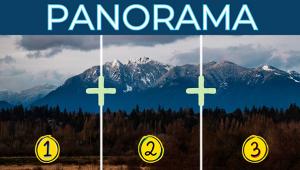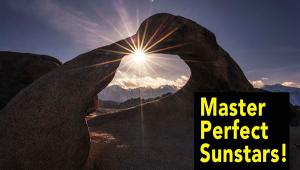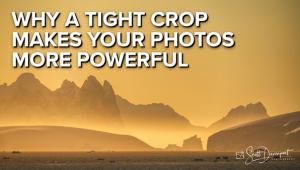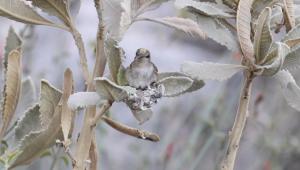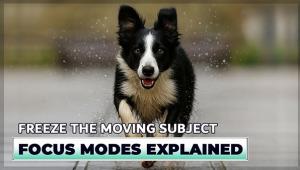Cold Comfort: Layne Kennedy’s Tips For Winter Warmth
“There’s an old saying among fans of cold-weather activity: cotton kills. In heavy snow or heavy activity, cotton will get wet and stay wet, and so will you.”

Chances are you won’t be photographing in the negative numbers of extreme cold that Layne Kennedy often encounters—we’re talking -15 to -30 degrees Fahrenheit—but his experience with and guidelines for cold-weather shooting can provide you with a considerable degree of comfort no matter what the temperature.
Layne, who grew up in Anchorage, Alaska, and now lives in Minnesota, is a magazine and corporate photographer who teaches workshops and leads wilderness adventure photography trips, and it is on these treks that he meets up with -15 and thereabouts temperatures. “But none of my workshop students has ever been cold,” he says. “The point I make to shooters taking my dogsledding workshops is…”
Wait…what was that? Dogsledding workshops?
“It’s a photography workshop in which our vehicles are dogsleds,” he says. “We dogsled every day and stay in a warm lodge every night. It’s like most of my workshops—editorial-based, so people learn to tell an adventure story, to use photography in a storytelling way. The workshop students are not just going out and shooting pretty pictures in winter—they’ll get those pictures, but they will also get the nuts and bolts of the adventure: harnessing, running, and feeding the dogs; all the starts and stops of the work that goes into it…the whole story.”

All Photos © Layne Kennedy

Oh, okay. And the point you make to these workshop students?
“That point is the reason I can embrace shooting in extreme cold: I dress for it. It’s that simple. If you dress for it, you’ll enjoy where you are and what you’re doing; if you don’t dress for it, you’ll be miserable.”
The magic word—and this won’t come as a surprise to anyone who’s ever leafed through an L.L. Bean, Cabela’s, or REI catalog—is layers. The easiest guide to layering? The aforementioned outfitters, and those nearby or on the Internet that, in your judgment, have their act together.
“The main thing is the insulation layer,” Layne says. “Thermal underwear and, if it’s really going to be cold, fleece over that. The fleece wicks moisture away from your body; wool will do the same, but wool gets heavy.”


Most important after that is a shell layer that acts as a wind protector. “It’s the wind that will get you, but if you’ve got an anorak—one of those large Inuit-style overcoats—it will essentially act as a windbreaker. It’ll keep the wind out and the warmth in.”
The great thing about layers is that when you’re active, you can remove a few of them. “We’ll keep shedding layers on the dogsledding workshops, and then when we stop for lunch, we’ll put them back on,” Layne says.
He suggests that you avoid cotton clothing. “There’s an old saying among fans of cold-weather activity: cotton kills. In heavy snow or heavy activity, cotton will get wet and stay wet, and so will you.”
Top everything off with warm headgear—it’s been said that 80 percent of body heat escapes from the top—and consider a neck gaiter (fleece protection for your neck).
Really important are the gloves you choose. Layne says it’s best to forget fingerless gloves—“you’ll still freeze your fingers.” His choice: plunge mitts. “They’re monster mitts; some go almost to your elbows, and they’re fleece or wool lined, with a wind shell. I also wear Thinsulate gloves. When I want to take pictures, I drop off the plunge mitts—straps hold them to my jacket—and take the shots with the Thinsulate gloves on my hands. When I’m done, I plunge my hands back into the mitts.”


There are lots of choices for cold-weather protection no matter where you’re likely to be. “Any good winter supply, hunting and fishing, or outdoor outfitter will know what to suggest,” Layne says.
Cold protection for your camera is a different story, and a shorter one. “Nothing special,” Layne says. “Back in the film days, people used to send their cameras off to get a special lubricant. Today, with digital, the big thing is maintaining battery power.” In really cold weather, Layne suggests turning off autofocus if you really don’t need it, not using live view, and not looking at the monitor all the time to review images. If it’s really cold he’ll keep his camera inside his jacket when he’s not shooting, and he will usually carry a couple of extra batteries in his camera bag. “In the winter I carry an insulated camera bag—it adds more closed-cell foam—and I buy a bunch of eight-hour hand warmers,” he says. “I’ll rubber band one or two of the warmers to the extra batteries, which are inside the cases they came in, and that will keep my spare batteries warm all day long. Simple things, but they work.”
The really important camera consideration comes after the shooting’s done. “If you’ve been shooting in temperatures of 15 above to 30 below, even with warmers in your bag, when you come back inside do not open that bag for a couple of hours,” Layne says. “Let it slowly acclimate to the warmer room; otherwise you’ll get condensation all over your gear. I tell workshop people to brush off any snow that’s on the bag, set it on the floor, put their jacket over the bag, and go take their showers, have dinner…then open the bag.”
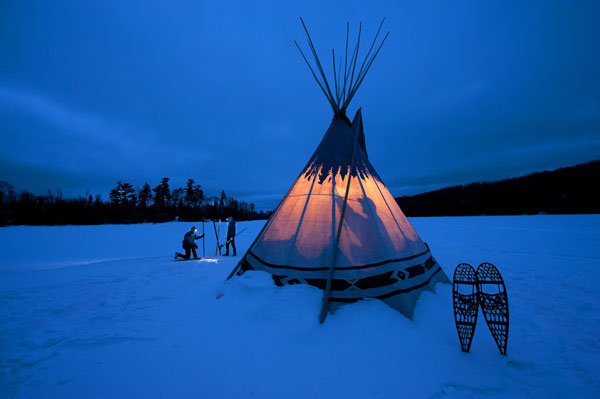
These cautions and precautions are standard operating procedure for Layne, for whom cold-weather photography isn’t just a specialty, it’s also a passion. “I love getting the kinds of images other people don’t get, and extreme conditions offer so much more than everyday shooting. And there’s another great thing about winter photography: there are fewer people out there. I really embrace the idea of being out when there’s hardly anyone around, when I have the place pretty much to myself.”
“I love getting the kinds of images other people don’t get, and extreme conditions offer so much more than everyday shooting.”
Layne’s website, www.laynekennedy.com, features galleries of images as well as information about his dogsledding (and other) workshops.
- Log in or register to post comments






